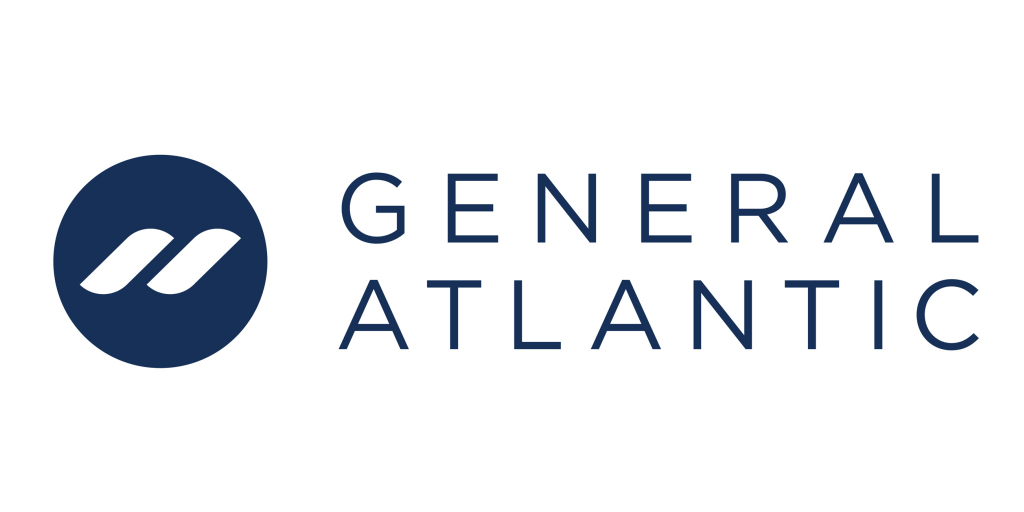
Energy costs pose a significant financial burden for low-income Americans, who end up paying about four times more of their income on energy than non-low-income individuals. Although efforts like the Weatherization Assistance Program have made strides in reducing this disparity, it hasn’t been enough. This year, federal housing departments are poised to alleviate more of these energy-related challenges and bring about greater energy equity.
The Departments of Agriculture (USDA) and Housing and Urban Development (HUD) have proposed to adopt updated energy efficiency standards for the housing units they support. Since 2015, new single-family and low-rise multifamily homes in their portfolio have been required to adhere to the 2009 International Energy Conservation Code (IECC) at a minimum, or a more stringent local energy code if available. Their initial findings suggest that adopting the 2021 IECC could lead to a 27 percent reduction in energy consumption compared with the 2009 IECC, result in positive cash flow within two years, and generate $14,536 in life cycle cost savings per single-family home. This is particularly impactful considering that the Veterans Administration and Federal Housing Administration also align with HUD and USDA efficiency standards, collectively contributing over 130,000 new affordable single-family homes annually, predominantly housing low-income, rural, and military families.
Introducing the New Energy Efficient Homes Credit
Adoption of the 2021 IECC would mean homes are built in closer alignment with ENERGY STAR® Single Family New Homes V3.2 and the Department of Energy’s (DOE’s) Zero Energy Home (ZERH) V2, certifications that come with Inflation Reduction Act (IRA) incentives.
The IRA’s New Energy Efficient Homes Credit (45L) offers up to $5,000 for each newly constructed or significantly renovated dwelling unit that meets the ZERH V2 criteria or up to $2,500 for units achieving ENERGY STAR® certification. ENERGY STAR requirements are designed to achieve at least 10 percent higher efficiency than the reference energy code and 20 percent greater efficiency on average. Builders can choose between prescriptive and performance pathways, which provide flexibility to find the most cost-effective approach to building high-efficiency homes. ZERH V2, which goes beyond ENERGY STAR, mandates elevated energy efficiency, electric vehicle charging readiness, solar panel preparedness, and additional measures to reduce greenhouse gas emissions, indoor air pollutants, and energy expenditures, which explains the difference in incentives.
Incentives make building high-efficiency, all-electric homes a smart strategy for home builders
First things first. All-electric homes (even without ENERGY STAR) are cheaper to build and operate than homes with gas appliances according to a 2022 RMI report.
Building on existing ENERGY STAR analysis, RMI found that in every International Code Council climate zone across the United States, achieving the efficiency levels required to earn 45L tax credits would cost less for all-electric new homes than for new homes that use gas (Figure 2). According to our analysis, the median additional cost for gas homes to attain ENERGY STAR is approximately $480, escalating to $2,000 for ZERH homes, which are obligated to include electric-ready components for space and water heating.
The IRA incentives add high-efficiency icing to the all-electric cake.
The IRA incentives add high-efficiency icing to the all-electric cake.
All-electric homes are more affordable to boost to ENERGY STAR levels because they’re more efficient from the start. Even at federal minimum standards, air source heat pumps are two to three times more efficient than gas furnaces. For example, on average across climate zone 5A, inflation- and location-adjusted figures from the National Residential Efficiency Measures Database (NREMD) suggest that a modest performance bump to a home’s heat pump costs less than $400. The price of a comparable improvement to a furnace is more than double: a 95 AFUE furnace costs over $800 more than a federal-minimum-performance 80 AFUE model.
Hello, Southeast
The IRA does not completely close the incremental cost gap between 2021 IECC-compliant and ENERGY STAR homes in every climate zone — but in the Southeast’s climate zones 1, 2, and 3, it slams the gap shut. The Southeast boasts the highest volume of new home construction in the United States. HUD and USDA project that, including adjoining Oklahoma and Texas, Southeastern states in these climate zones will host more than 100,000 new single-family and low-rise multifamily homes annually supported by their programs, or over 60 percent of their single-family and low-rise portfolio nationwide.
Don’t count cooler climates out
All is not lost north of the Carolinas. The incremental cost gaps to achieve ENERGY STAR efficiency levels are modest in most climate zones, only exceeding $500 on average in the coastal Pacific Northwest (zone 4C), chilly zone 5A with its numerous dense and expensive metropolitan areas, and northern Alaska (zone 8). Many states and utilities already offer rebates that close the gap — and then some — and more are sure to follow as subnational governments seek to leverage the IRA’s historic investment.
Consider Maryland as an example. Most of the state is within climate zone 4A, where ENERGY STAR’s incremental cost gap after 45L averages about $250. Investor-owned utilities BGE, Pepco, Delmarva, and SMECO offer an array of incentives for energy-efficient new single-family homes that use ENERGY STAR as a reference certification. Thoughtful incentive stacking could net a builder more than $1,800 in BGE’s service territory, where new single-family detached homes can earn $1,250 for ENERGY STAR certification alone plus up to $1,150 for efficient HVAC and water heating appliances.
Colder climate zones’ costs also may be overstated when compared with construction practices already widespread in these markets. For example, one of the costlier energy-saving measures modeled for every climate zone is the installation of ducts inside conditioned space. In cooler climate zones, this is an increasingly common practice, so we would not see an incremental cost above business-as-usual construction expenses. As their popularity grows, ductless mini-split heat pumps would also remove this incremental cost.
Everything’s coming up ENERGY STAR
The IRA’s tax incentives alone could motivate builders to raise their sights to ENERGY STAR certification, especially as more builders experiment, learn, and scale up least-cost practices to get certified. Unfortunately, the IRA does not quite cover the cost of ZERH. Even in relatively affordable climate zone 3A, extending from Oklahoma and northeastern Texas to North Carolina, builders will need to spend over $600 more to get certified than they can earn back through 45A. As discussed above, utilities, states, and local governments could close this gap — but especially in the absence of building regulations that drive uptake of ZERH’s requirements for improved air quality and electric-, solar-, and EV-readiness, ENERGY STAR seems more likely to prevail.
Modern energy codes for all
HUD and USDA have an opportunity to deliver greater resilience, affordability, health, and comfort to low- and moderate-income residents across the United States. What’s even more remarkable is that these updates to building codes can be both affordable and, in some places, financially beneficial for homebuilders. HUD and USDA would join the 25 US states that have already adopted or are actively considering energy codes based on the 2021 IECC or codes resulting in equivalent or greater energy efficiency. With a boost from increasingly widespread adoption and incentives from the IRA, states, localities, and utilities, homebuilders serving these growing markets will do well by doing good.
To learn more about the effects of 45L on efficient home construction costs in your area, reach out to Erin Sherman at esherman@rmi.org.
Note: This analysis assessed incremental costs of attaining ENERGY STAR Single-Family New Homes National Version 3.2 and Zero-Energy Ready Homes National Version 2 certification. At this time, federal guidance indicates that ENERGY STAR national version 3.2 will become a reference certification for the 45L tax credit in 2025. Until then, the less stringent national version 3.1 will continue to apply, such that the incremental cost will be significantly lower, and overall financial case for ENERGY STAR construction even stronger, than found by this analysis of version 3.2. ZERH national version 1 will be replaced in the same manner by ZERH national version 2 in 2024.
Methods
RMI analysis followed the below steps:
- Begin with ENERGY STAR’s Cost & Savings Estimates for Single-Family New Homes, Version 3.2, which estimates measures selected and incremental costs of ENERGY STAR certification above 2021 IECC for one city in each of 8 climate zones.
- Using DOE ZERH’s Single Family National Program Requirements Version 2, identify what measures would be needed to attain ZERH certification.
- Where ZERH measures differ from ENERGY STAR measures, estimate incremental costs for ZERH measures using NREMD and other methods, such as review of prior Department of Energy and National Laboratory publications, as needed.
- Apply an inflation adjustment factor to each measure’s incremental cost based on the date of the publication used to estimate the cost. Note that estimates are provided in 2021 dollars.
- Apply a location adjustment to each measure’s incremental cost using city-level construction cost category data from RSMeans For climate zone-level location adjustments, city-level indices were combined in an unweighted average.
- Sum adjusted incremental measure costs to estimate total incremental costs of each certification for a home of each fuel type (electric-only or dual fuel).
© Rocky Mountain Institute. Published with permission. Originally posted on RMI. By Erin Sherman.
Featured image by Kimson Doan on Unsplash
I don’t like paywalls. You don’t like paywalls. Who likes paywalls? Here at CleanTechnica, we implemented a limited paywall for a while, but it always felt wrong — and it was always tough to decide what we should put behind there. In theory, your most exclusive and best content goes behind a paywall. But then fewer people read it! We just don’t like paywalls, and so we’ve decided to ditch ours. Unfortunately, the media business is still a tough, cut-throat business with tiny margins. It’s a never-ending Olympic challenge to stay above water or even perhaps — gasp — grow. So …






